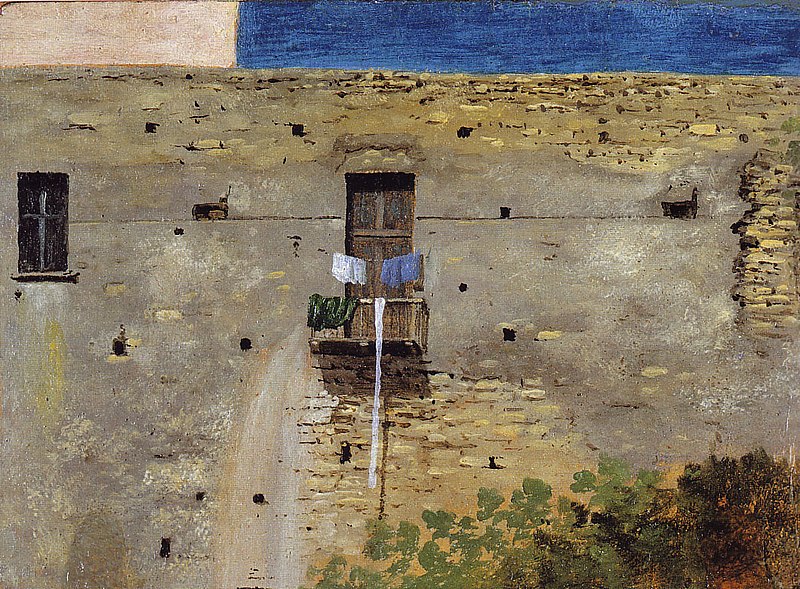Friday, September 12, 2008
A Wall in Naples
A Wall in Naples (1782) is, according to Lawrence Gowing, 'one of the great microcosms of painting, less than five inches by hardly more than six, yet built grandly out of the very stuff of illusion, that stuff of quite finite, yet endless potential.’
I don't think I was conscious of the painting when the National Gallery bought it 1993, but a few years later I was captivated by James Fenton's essay 'Who Was Thomas Jones?' (1997) which reproduced the painting and discussed its inclusion in the 1981 MOMA exhibition Before Photography (where it could be seen as a forerunner of later semi-abstract cropped photographs of walls). Like a photograph, this sketch is a complete image. As Peter Galassi has written in his book Corot in Italy, 'the open air artist undertakes to treat form and space, colour and light simultaneously, as interdependent aspects of an indivisible problem.'
Can this tiny sketch even be called a landscape painting? Tom Lubbock has written, 'this outdoor scene refuses to become a view. The building is seen directly across from a high vantage point. There is no sight of land, no ground level, no base or stage to the scene. The world just drops away out of the bottom of the picture. So there's no sense of place, and there's no proper vista, nothing for the viewer's eye to travel over into a distance, which is traditionally one of the main pleasures of landscape.'
A Wall in Naples and the other sketches Thomas Jones made in and around Naples in the early 1780s are quite unlike his studio paintings. Galassi noted a similar rift in the work of Jones's contemporary Pierre Henri de Valenciennes (whose sketches are equally striking). Bridging this gap would be the task for nineteenth century landscape art.
Labels:
plein air,
Thomas Jones
Location:
Naples, Italy
Subscribe to:
Post Comments (Atom)

No comments:
Post a Comment